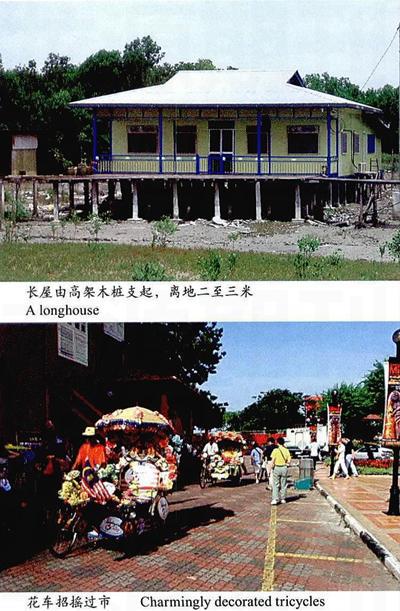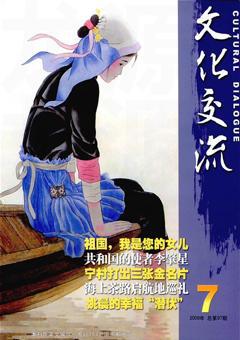A Glimpse of Long Houses in Malaysia
By Qian Guohong

On the flight to Malaysia, the guide told us, a group of Chinese tourists, about the longhouses in the rainforest area in eastern Malaysia and all of us became excited. We looked forward to catching a glimpse of the exotic structure where local residents live.
Our first stop after touching-down in Malaysia is Borneo Kelly Bay, a nature reserve. We take a bamboo raft tour on a stream, admiring the mangrove forest on both sides. At one spot, we get out nets and try to catch some crabs. After a dinner at which we grab food with our fingers, we drive to see longhouses in Sabah. The long ride makes us sleepy. After nearly three hours, we hear the guide say “Look, the longhouses!”
We become fully awake. Some wooden structures stretch like a train along a riverbank. Against a backdrop of rice paddies and thick woods, the houses look mysterious.
All these longhouses are built on the river bank. Their appearances respond to the shape of the bank. One longhouse looks like a straight stroke. Another longhouse extends in an undulating way. The longest longhouse is 100 meters long whereas shorter ones are several tens of meters long. They merge seamlessly with the background. They look like a picture.
The guide tells us that these houses are inhabited by Iban people. The longhouse we visit has 12 families living together. The house is built of wood in a simple style of Iban elements. Seeing us arrive, the residents of the longhouse welcome us upstairs. We step on the bamboo mat on the floor. The rooms have a lot of windows, bringing breeze in. The walls are decorated with brown things we cant name. The houses all stand on piles two or three meters tall. The roof is wood or tree leaves.Each house is surrounded by a fence as defense against possible attacks.A longhouse is composed of three parts: one part is open to the sky where food can be dried; the second part is rooms separated by wooden boards upon which people sleep; the last part is the long corridor. The corridor is the most important part of a longhouse: families usually hang out there, meetings and important ceremonies and celebrations are held there, guests are invited to sit there. People living in one longhouse are all relatives. The birth of a new baby into the house provides an opportunity to attach a new room to the house. The length of a longhouse portrays the population of families. Each longhouse has a house head in charge of family affairs, celebrations and dispute resolutions. The house head is democratically elected. If the head is found incompetent, an election will be held to choose a new head.
The longhouse looks like a dark green lizard crouching in the shadow of weeds and woods in the twilight. Looking back to the waving Iban people, I suddenly feel my heart touched: like the Village of Eight Diagrams in Zhejiang and the tulou houses in Fujian Province in China, the longhouse in Malaysia is another example of unique history, lifestyle, and culture.□

